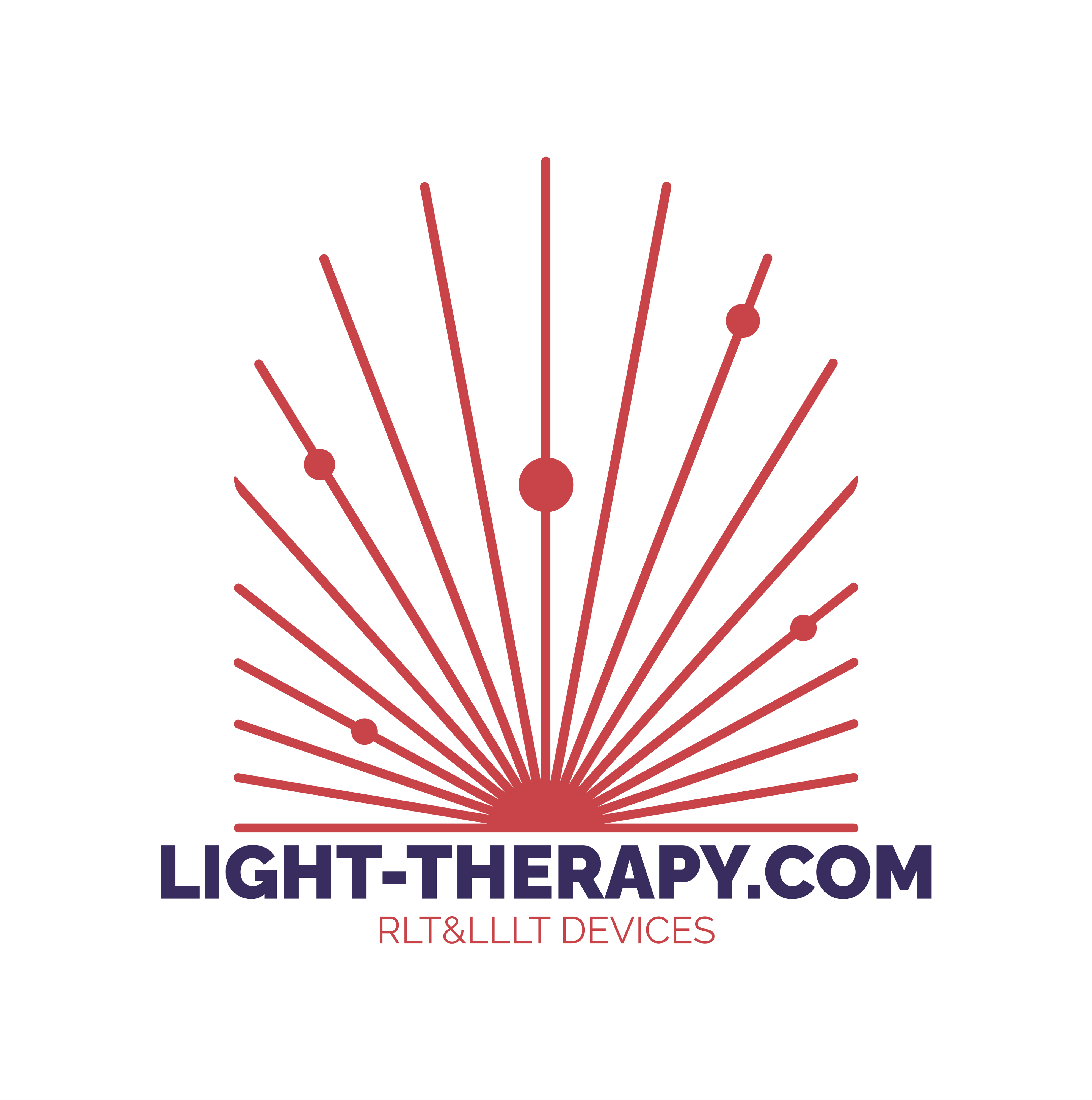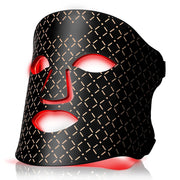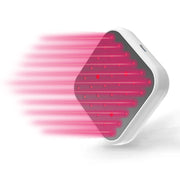DOES RED LIGHT THERAPY WORK?
If you’re among the 54 million Americans who experience the pain and loss of mobility due to arthritis, you know how frustrating and debilitating the disease can be. According to the Centers for Disease Control and Prevention (CDC), more than half of adult arthritis sufferers are under 65, although the risk increases markedly as people get older.
A Brief History of Red Light
In the early 1990s, NASA was interested in developing the ability to grow plants in space with a vision to reshape the future of space exploration by growing food indoors. NASA’s red light therapy experiment aimed to see if it would stimulate plant growth in space, where it’s difficult to use grow lights due to heavy power consumption and heat. Red light-emitting diode (LED) lights were shown to be a viable light source for plants because of their small size, safe operation, and low heat output.
 One of red light therapy’s first uses was to counteract poor cell growth in zero-gravity environments.
One of red light therapy’s first uses was to counteract poor cell growth in zero-gravity environments.Subsequent studies into the effects of red light on humans soon followed. In space, astronauts experience significant and dangerous bone and muscle loss, as well as slow healing. Research showed that these problems resulted from poor cell growth in zero-gravity conditions aboard spacecraft. Red light was found to have a stimulating effect on cellular metabolism that allowed astronauts to maintain muscle mass and bone density while in space. With this groundbreaking discovery, red light therapy was born.
Also known as photobiomodulation or low-level light therapy (LLLT), red light therapy has proved to be safe as well as highly effective. Today, thanks to technological advances, LED devices that emit red- and near-infrared (NIR) wavelengths are used to treat a variety of acute and chronic skin, muscle, bone, and connective tissue conditions.
In the last 20 years, scientists have conducted extensive research on the medical and cosmetic applications for red and NIR light. To date, all results have been positive and encouraging. One especially positive finding is that people who are seeking natural, non-invasive, non-pharmaceutical and safe treatments often discover that as they begin to treat one condition, they experience improvement in other areas as well.
One of the most prominent researchers in the field of red light therapy is Dr. Michael Hamblin. He is a principal investigator at the Wellman Center for Photomedicine at Massachusetts General Hospital, an associate professor of dermatology at Harvard Medical School, and a member of the affiliated faculty of Harvard-MIT Division of Health Science and Technology. Since the early 1990s, Hamblin has been studying low-level laser therapy as treatment for wounds, traumatic brain injury, arthritis, hair regrowth, and psychiatric disorders, and has published nearly 300 papers about his research findings.
In a March 2020 interview, Hamblin was asked if he used red light therapy personally, and if so, how he uses it. He explained that he indeed uses the technique regularly to alleviate soreness in his knees and elbows, and applies it to his forehead twice weekly to boost brain health.
According to Hamblin, LLLT actually increases inflammation temporarily in people without chronic ongoing inflammation (as part of the healing response) but it has an anti-inflammatory response in people who do have chronic inflammation. This means when someone is injured, red light therapy can speed up healing. And in cases where underlying inflammation causes autoimmune or other disorders, red light has a powerful healing effect.
Some exciting preliminary findings relate to cancer treatment. Although Hamblin does not believe red light should be applied to a tumor, he says that applying red light to the thymus (a lymphoid organ just below the breastbone) may stimulate the body’s ability to fight off cancer. He also stated that preliminary studies on infrared therapy for advanced cancer have been promising.
Cutting to the Chase: Does Red Light Therapy Work?
This, of course, is the first question people ask when hearing about red light therapy. There are innumerable personal anecdotes saying that it absolutely does work—but even more powerful is an incredible body of research. When a therapy is supported by thousands of peer-reviewed studies and clinical trials, and when these studies show that red light therapy is a safe and effective therapy, the choice to use it becomes clearer.
Here is a sampling of studies on the efficacy of red light therapy for a variety of conditions:
- Younger looking skin: LLLT helps reverse signs of aging by increasing collagen and elastin production. It also stimulates the growth of capillaries under the skin, which will reduce the appearance of fine lines and wrinkles and restore youthful skin thickness, firmness, and elasticity.
- Brain health: There are numerous positive effects of red light on brain, such as, red light is a neuroprotector, meaning it protects neurons (brain cells) from neurodegenerative disorders, and also accelerates healing from traumatic brain injury. It works partly by reducing oxidative stress, which is linked to Alzheimer’s disease and non-seasonal depressive disorders, and partly by stimulating normal healthy growth of neurons.
- Eye health: Red light can protect vision and treat age-related macular degeneration (AMD), glaucoma, and eye injuries.
- Hair regrowth: LLLT increases blood flow to the scalp, boosts collagen production, and stimulates activity in dormant hair follicles.
- Restoring healthy thyroid function: This relieves symptoms of underactive thyroid, such weight gain, fatigue, hair loss, and muscle weakness.
- Better sleep: Red light stimulates melatonin production and helps regulate the circadian rhythm (natural sleep/wake cycles).
- Male sexual and reproductive health: LLLT stimulates energy production in testosterone-producing Leydig cells; and improves sperm motility, which can improve chances of conception.
- Chronic skin disorders: Red light therapy minimizes symptoms and treats inflammation that contributes to (and aggravates) acne, psoriasis, eczema, and rosacea.
- Physical performance: Red light has been shown to decrease muscle fatigue, increase muscle mass, and minimize delayed onset muscle soreness.
- Immunity: Red light boosts production of stem cells. These key elements of the immune system are unspecialized cells that transform into specialized cells as needed, at the site of wounds or disease.
- Peripheral nervous system health: LLLT stimulates nerve regeneration and the production of connective tissue cells known as fibroblasts, which are critical in restoring communication between nerve cells when one or more are damaged.
- Wound healing: Red light therapy reduces chronic inflammation, increases blood flow, and stimulates collagen production, which helps wounds heal. Learn more about red light therapy wound healing here.
- Bone health: Red light therapy regulates bone growth, prevents bone loss, and accelerates bone repair.
- Weight loss: Red light has appetite-suppressant effects, as it increases muscle mass to stimulate the metabolism. It reduces autoimmune activity in the thyroid, reduces insulin resistance, reduces the appearance of cellulite, and has a remarkable ability to cause fat cells to “leak” and release their contents.
- Pain relief: Red light therapy helps with inflammatory pain and neuropathic pain; it can treat tendonitis (a persistent problem among athletes), osteoarthritis, carpal tunnel syndrome, knee pain, and low back pain by reducing inflammation and accelerating healing. Red light therapy for pain relief is highly effective and it can be used for rapid injury recovery as well.
- Scar reduction: By supporting normal organization of collagen and activating stem cells, red light therapy can help reduce scarring. In existing scars, LLLT helps replace scar tissue with healthy skin tissue as scar cells die off. If applied immediately after injury, red light can stimulate the growth of normal tissue rather than scar tissue at the site of the wound.









